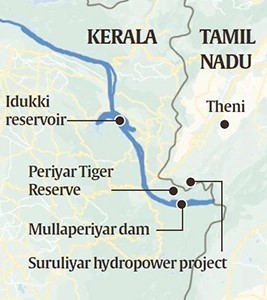7667766266
enquiry@shankarias.in
The Tamil Nadu government has moved the Supreme Court accusing Kerala of “crying foul” about the safety of the old Mullaperiyar dam.

According to Tamil Nadu Water Resources Organisation, Mullaperiyar is the first reservoir to have Rule Curve implemented, in India.
|
Tamil Nadu’s stand |
Kerala’s stand |
|
|